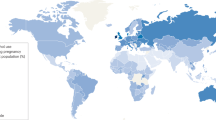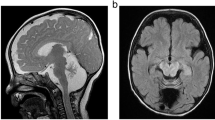Abstract
Background
Fetal alcohol syndrome (FAS) is caused by maternal alcohol consumption during pregnancy; although additional factors might be involved, as development and severity are not directly related to alcohol intake. The abnormal glycosylation caused by alcohol might play a role in FAS according to the clinical similarities shared with congenital disorders of glycosylation (CDG). Thus, mutations underlying CDG, affecting genes involved in glycosylation, could also be involved in FAS.
Methods
A panel of 74 genes involved in N-glycosylation was sequenced in 25 FAS patients and 20 controls with prenatal alcohol exposure. Transferrin glycoforms were evaluated by HPLC.
Results
Rare (minor allele frequency<0.009) missense/splice site variants were more frequent in FAS than controls (84% vs. 50%; P=0.034, odds ratio: 5.25, 95% confidence interval: 1.3–20.9). Remarkably, three patients, but no controls, carried variants with functional effects identified in CDG patients. Moreover, the patient with the most severe clinical phenotype was the only one carrying two variants with functional effects. Family studies support that the combination of a genetic defect and alcohol consumption during pregnancy might have a role in FAS development.
Conclusions
Our study supports that the rare variants of genes involved in N-glycosylation could play a role in the development and severity of FAS under prenatal alcohol exposure.
Similar content being viewed by others
Log in or create a free account to read this content
Gain free access to this article, as well as selected content from this journal and more on nature.com
or
References
Jalali GR, Vorstman JA, Errami A et al. Detailed analysis of 22q11.2 with a high density MLPA probe set. Hum Mutat 2008;29:433–440.
Hoyme HE, May PA, Kalberg WO et al. A practical clinical approach to diagnosis of fetal alcohol spectrum disorders: clarification of the 1996 institute of medicine criteria. Pediatrics 2005;115:39–47.
Hoyme HE, Kalberg WO, Elliott AJ et al. Updated clinical guidelines for diagnosing fetal alcohol spectrum disorders. Pediatrics 2016;138:e20154256.
Del Campo M, Jones KL . A review of the physical features of the fetal alcohol spectrum disorders. Eur J Med Genet 2016;60:55–64.
Jones KL, Smith DW . Recognition of the fetal alcohol syndrome in early infancy. Lancet 1973;302:999–1001.
Chudley AE, Conry J, Cook JL et al. Fetal alcohol spectrum disorder: Canadian guidelines for diagnosis. CMAJ 2005;172:S1–S21.
Guizzetti M, Costa LG . Cholesterol homeostasis in the developing brain: a possible new target for ethanol. Hum Exp Toxicol 2007;26:355–360.
Kot-Leibovich H, Fainsod A . Ethanol induces embryonic malformations by competing for retinaldehyde dehydrogenase activity during vertebrate gastrulation. Dis Model Mech 2009;2:295–305.
Lipinski RJ, Godin EA, O'leary-Moore SK et al. Genesis of teratogen-induced holoprosencephaly in mice. Am J Med Genet C Semin Med Genet 2010;154C:29–42.
Abdelrahman A, Conn R . Eye abnormalities in fetal alcohol syndrome. Ulster Med J 2009;78:164–165.
van Balkom ID, Gunning WB, Hennekam RC . Fetal alcohol syndrome: an unrecognized cause of intellectual handicap and problem behavior in The Netherlands. Ned Tijdschr Geneeskd 1996;140:592–595.
Waszkiewicz N, Szajda SD, Zalewska A et al. Alcohol abuse and glycoconjugate metabolism. Folia Histochem Cytobiol 2012;50:1–11.
Welti M, Hulsmeier AJ . Ethanol-induced impairment in the biosynthesis of N-linked glycosylation. J Cell Biochem 2014;115:754–762.
Moremen KW, Tiemeyer M, Nairn AV . Vertebrate protein glycosylation: diversity, synthesis and function. Nat Rev Mol Cell Biol 2012;13:448–462.
Binkhorst M, Wortmann SB, Funke S et al. Glycosylation defects underlying fetal alcohol spectrum disorder: a novel pathogenetic model. "When the wine goes in, strange things come out" - S.T. Coleridge, The Piccolomini. J Inherit Metab Dis 2012;35:399–405.
Jaeken J . Congenital disorders of glycosylation. Ann N Y Acad Sci 2010;1214:190–198.
de la Morena-Barrio ME, Martinez-Martinez I, de Cos C et al. Hypoglycosylation is a common finding in antithrombin deficiency in the absenceof a SERPINC1 gene defect. J Thromb Haemost 2016: 1549–1560.
Astley SJ, Clarren SK . Diagnosing the full spectrum of fetal alcohol-exposed individuals: introducing the 4-digit diagnostic code. Alcohol Alcohol 2000;35:400–410.
de la Morena-Barrio ME, Hernandez-Caselles T, Corral J et al. GPI-anchor and GPI-anchored protein expression in PMM2-CDG patients. Orphanet J Rare Dis 2013;8:170.
de la Morena-Barrio ME, Sevivas TS, Martinez-Martinez I et al. Congenital disorder of glycosylation (PMM2-CDG) in a patient with antithrombin deficiency and severe thrombophilia. J Thromb Haemost 2012;10:2625–2627.
del Castillo Busto ME, Meija J, Montes-Bayon M et al. Diophantine analysis complements electrospray-Q-TOF data for structure elucidation of transferrin glycoforms used for clinical diagnosis in human serum and cerebrospinal fluid. Proteomics 2009;9:1109–1113.
Helander A, Husa A, Jeppsson JO . Improved HPLC method for carbohydrate-deficient transferrin in serum. Clin Chem 2003;49:1881–1890.
Linssen M, Mohamed M, Wevers RA et al. Thrombotic complications in patients with PMM2-CDG. Mol Genet Metab 2013;109:107–111.
Hernandez-Espinosa D, Minano A, Martinez C et al. L-asparaginase-induced antithrombin type I deficiency: implications for conformational diseases. Am J Pathol 2006;169:142–153.
Bjursell C, Erlandson A, Nordling M et al. PMM2 mutation spectrum, including 10 novel mutations, in a large CDG type 1A family material with a focus on Scandinavian families. Hum Mutat 2000;16:395–400.
Matthijs G, Schollen E, Van Schaftingen E et al. Lack of homozygotes for the most frequent disease allele in carbohydrate-deficient glycoprotein syndrome type 1A. Am J Hum Genet 1998;62:542–550.
Vega AI, Perez-Cerda C, Abia D et al. Expression analysis revealing destabilizing mutations in phosphomannomutase 2 deficiency (PMM2-CDG): expression analysis of PMM2-CDG mutations. J Inherit Metab Dis 2011;34:929–939.
Westphal V, Xiao M, Kwok PY et al. Identification of a frequent variant in ALG6, the cause of congenital disorder of glycosylation-Ic. Hum Mutat 2003;22:420–421.
Vleugels W, Schollen E, Foulquier F et al. Screening for OST deficiencies in unsolved CDG-I patients. Biochem Biophys Res Commun 2009;390:769–774.
Quintana E, Navarro-Sastre A, Hernandez-Perez JM et al. Screening for congenital disorders of glycosylation (CDG): transferrin HPLC versus isoelectric focusing (IEF). Clin Biochem 2009;42:408–415.
Thiel C, Lubke T, Matthijs G et al. Targeted disruption of the mouse phosphomannomutase 2 gene causes early embryonic lethality. Mol Cell Biol 2006;26:5615–5620.
de la Morena-Barrio ME, Sandoval E, Llamas P et al. High levels of latent antithrombin in plasma from patients with antithrombin deficiency. Thromb Haemost 2017;117:880–888.
Acknowledgements
We acknowledge Irene Martínez-Martínez and Salvador Espín for their assistance on HPLC analysis.
Author information
Authors and Affiliations
Corresponding author
Ethics declarations
Competing interests
The authors declare no conflict of interest.
Additional information
AUTHOR CONTRIBUTIONS
M.E.M.-B., J.C., E.G.-N., and V.V. designed research, analyzed the data, and wrote the paper. M.J.B.-M., V.L.-G., L.M.-R., O.G.-A., M.D.C., and E.G.-N. collected patients and clinical data and revised the paper. R.L.-G., M.E.M.-B., and A.M. performed biochemical and genetics experiments. A.I.M. and J.P. performed NGS analysis and genetic analysis.
STATEMENT OF FINANCIAL SUPPORT
MEM-B holds a postdoctoral fellowship from Fundacion Espanola de Trombosis y Hemostasia, Spain. This work was supported by PI15/00079 and CB15/00055 from ISCIII & FEDER; 19873/GERM/15 Fundacion Seneca.
Supplementary material is linked to the online version of the paper at
Supplementary information
Rights and permissions
About this article
Cite this article
de la Morena-Barrio, M., Ballesta-Martínez, M., López-Gálvez, R. et al. Genetic predisposition to fetal alcohol syndrome: association with congenital disorders of N-glycosylation. Pediatr Res 83, 119–127 (2018). https://doi.org/10.1038/pr.2017.201
Received:
Accepted:
Published:
Issue date:
DOI: https://doi.org/10.1038/pr.2017.201
This article is cited by
-
Genetic Analysis of Two Novel GPI Variants Disrupting H Bonds and Localization Characteristics of 55 Gene Variants Associated with Glucose-6-phosphate Isomerase Deficiency
Current Medical Science (2024)
-
Transcriptional analysis of the response of C. elegans to ethanol exposure
Scientific Reports (2021)



